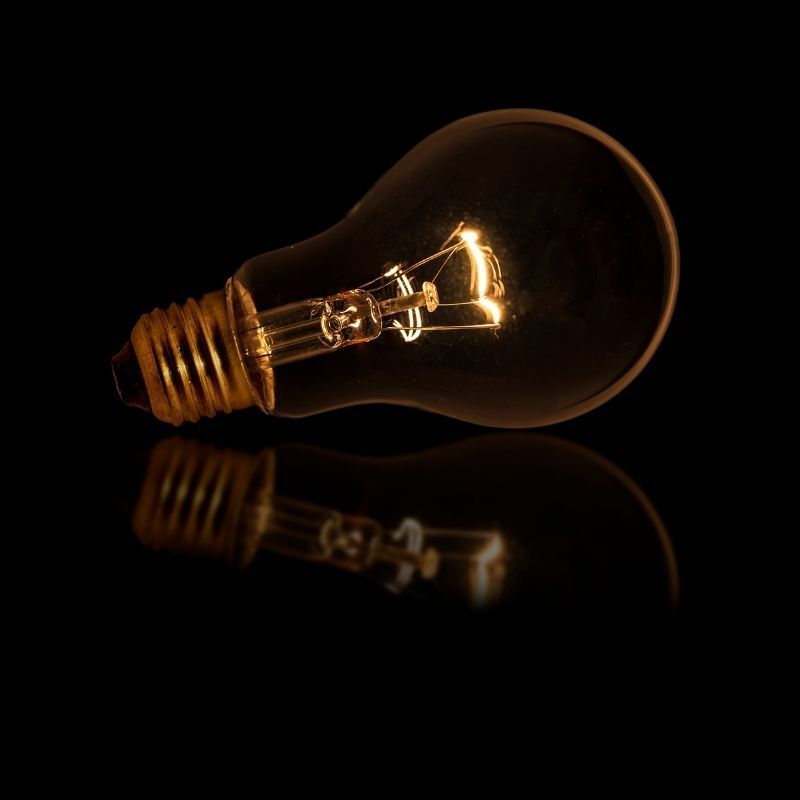What Today's Smart Energy Customers Want
So much can change over the course of a few decades. In the past 30 years, we’ve seen the advent of mobile phones, watched the internet blossom and gleefully adopted a plethora of time saving tech, from dishwashers to tumble dryers. Take a millennial of today back to 1989 and they’d think they’d stepped back into the Dark Ages.
While the energy market is somewhat less glamorous than some of the evolutions of the past few decades, it has, nonetheless, changed beyond all recognition. In 1989, there was a closed market, zero choice and very little engagement. Households switched on the lights, turned up the heating and paid the bills without question.
But all that changed in 1990 when the energy market began to open up. Although it didn’t open to the domestic sector until eight years later, it was a formative moment, forging the shape of things to come. Today’s consumer is a far cry from the disengaged bill payer of the 1980s. Now, our energy customers are smarter, and to meet their needs we in the industry need to get smart too.
What are smart energy customers?
Today’s consumer is switched on to energy. The cost of gas and electricity supply has increased significantly since privatisation, around a half for gas and a third for electricity. With a larger proportion of earnings going on heating and powering homes, it comes as little surprise that more consumers are engaged with their energy supply.
As such, there is more interest in brokering a deal. While some of the old school generation may be happy to stick with the same old British Gas contract they’ve had since the year dot, an increasing number of customers are keen to shave pennies off their bills on a regular basis.
2018 saw record numbers of customers switching suppliers, with around 5.8m choosing to move their business elsewhere. But a smarter customer is not just one who knows where their energy is coming from and how much it costs.
Increasingly, we’re seeing a demand for more connection, more automation, and more technology. Smart speakers are becoming a mainstay of the modern home, alongside home automation devices such as the Nest thermostat or Hue lighting. Customers want more than just an affordable energy supply that they use for 12 months and then change. They are demanding something fit for the future, that makes the most of the available technology and lets them stay in control.
What do smart customers want?
In order to meet the needs of this new breed of customers, independent energy suppliers need to think about what it is they want. Thinking about consumer psychology and the traits of the society in which we live, the modern, smart energy customer demands:
- Choice
- Convenience
- Flexibility
- Speed
- Personalisation
How we deliver this as the energy industry remains to be seen, but there are a few initiatives in the pipeline that will help things along. Although shifts in customer expectations are typically most pronounced with the younger generation, the older generation inevitably follow suit, so with any solution, its crucial not to alienate those who perhaps aren’t as tech savvy along the way.
Choice
Choice is a crucial factor in securing the smart customer. Not so much in choice of tariff though; nobody wants to go back to the ‘bad old days’ of suppliers have a multitude of tariffs, making it too confusing to compare.
No, the modern customer wants choice in other areas too. Choice in how they are contacted, choice in how they pay and choice in how they manage their accounts. Online billing, options for text message alerts and a range of payment methods are tried and tested, and a bit of a no-brainer.
However, there is more that can and should be done in the future. Dedicated apps are a good first step, allowing on the go monitoring of home energy use and ways to talk to and interact with suppliers. Next, we could see smart speaker integration through adding supplier specific skills to Alexa and other virtual assistants.
Convenience
Convenience can be achieved with the same sort of tech we’ve just been speaking about. Apps, smart speakers, email and text can all be combined to offer customers a more convenient way to manage their accounts. However, the choice sill comes into play here too; while some customers may find online billing convenient, others may still prefer a paper bill in the post. We need to manage the range of options available to ensure convenience for everyone.
When it comes to things like moving to a cheaper tariff or implementing time of use benefits , wouldn’t it be more convenient if it was automated for our customers? Enabling users to set defined criteria for these sorts of things and then taking care of the donkey work for them will be key to securing smart customers in future.Flexibility
This brings us on to the issue of flexibility. With the smart meter rollout well underway, we are nearing a time when there will be far more that we can do to make our customers energy supply word harder for them. From time of use tariffs to half hourly dynamic pricing, the doors are wide open for innovative approaches and a better service overall.
But, there’s another element to the smart meter rollout that few have considered, and that’s the DCC ‘other user’ function. Here, an authorised entity will be able to access data on customers to see how they can deliver benefits. This could be a supplier, a generator, a price comparison service… how it will play out in practice.
Once smart meters are installed, the new role of DCC ‘Other User’ enables authorised entities to have customer data access with prior consent to see how they could deliver benefit. This may be via a tariff, new appliances, energy saving measures, collective switching, energy sharing and many more applications that are yet to emerge.
There’s another flexibility issue which could become prevalent in future, and that’s the ability to manage other accounts. With smart metering, it could become possible for a customer to manage the account of a community group, of their aging parents or of their small business from one central location. This is something that just can’t be done right now, but something our smart customers will undoubtedly demand.
Speed
Research has shown that the average customer spends less than half an hour a year dealing with their energy. Although this is clearly the mark of a disengaged society , it’s not a trend we want to buck to too great an extent. When energy becomes a burden, we risk alienating our customers even further.
Engaging customers with energy use in a bite size, efficient way is one of the biggest challenges facing suppliers today. Ultimately creating a high speed service that minimises the time they need to spend figuring it out is the solution we are tasked to find. In an ideal world, a customer will tell us how they use their energy, give us permission to manage it for them, and then we take the lead seamlessly.
Imagine a time when a customer could hop on the website or app of their energy supplier and let them know they have changed shift patterns, had a baby or that they’ve broken their leg and will be at home for several weeks. As the information is updated to their account, an algorithm goes to work sorting out their schedules to make their energy as cheap as possible for the times they need it.
For the customer, it’s a five minute job. For the supplier, it’s an opportunity to do more for the customer and for energy supply in general. With more knowledge of energy use, grid balancing will become substantially easier and the peaks and troughs of supply and demand can be capitalised on for the benefit of our customers. All the customer will see, however, is lower energy bills.Personalisation
Developing beyond the p/kWh tariff is a challenging concept but will be the way forward as we start to embrace the possibilities of smarter tariffs. Having customers switch tariffs over the course of the month, week or even day can help make things more personal to them, helping their energy work harder for their money.
Switching a customer from a ‘weekday’ profile, where energy costs are suppressed in the evening, to a ‘weekend’ profile where they are rewarded for off peak use could be one way to do this. Some customers though won’t fit into the nine to five pattern, so further personalisation could be leveraged for those who work from home, those who do shift work and those who work nights. Special tariffs for retirees or mums at home with babies become a possibility, as do tariffs which reward the most tech-savvy with the cheapest rates for timed consumption when demand is lowest.
Things can go even further than this, with different tariff rates for different appliances even. With more gadgets becoming internet connected, could we reach a situation where we, the suppliers, tell the tumble dryer when to turn on? Possibly.
The tech world is ablaze with possibilities for the future, and with companies striving to develop apps, software and tools to aid our move to energy 2.0. How will your energy supply company grab their share of the smart customer market?




